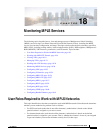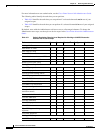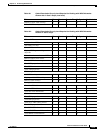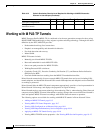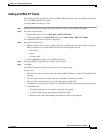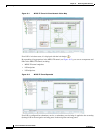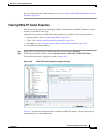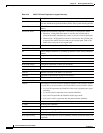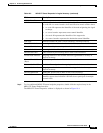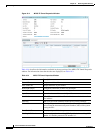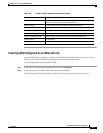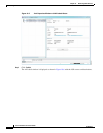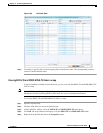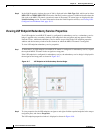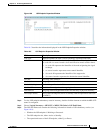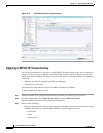
18-9
Cisco Prime Network 4.0 User Guide
OL-29343-01
Chapter 18 Monitoring MPLS Services
Working with MPLS-TP Tunnels
Step 3 To view additional MPLS-TP tunnel endpoint properties, double-click the required entry in the
MPLS-TP Tunnel Endpoints table.
The MPLS-TP Tunnel Properties window is displayed as shown in Figure 18-4.
LSP Mid Points Tab
LSP ID LSP identifier, derived from both endpoint identifiers and using the format
src-node-ID::src-tunnel-number::dest-node-ID::dest-tunnel-number where:
• src-node-ID represents the identifier of the node originating the signal
exchange.
• src-tunnel-number represents source tunnel identifier.
• dest-node-ID represents the identifier of the target node.
• dest-tunnel-number represents the destination tunnel identifier.
LSP Type Indicates whether the LSP is active (Working) or backup (Protect).
Forward In Label Incoming label identifier in the forward direction (source to destination).
Forward Out Label Label selected by the next hop device in the forward direction.
Reverse In Label Incoming label identifier in the reverse direction (destination to source).
Reverse Out Label Label selected by the next hop device in the reverse direction.
Forward Out Interface Outgoing interface in the forward direction, hyperlinked to its entry in
physical inventory.
Forward Bandwidth
(kbps)
Bandwidth specification in Kb/s for the forward direction.
Reverse Out Link ID Link identifier assigned to the outgoing interface in the reverse direction.
Reverse Out Interface Outgoing interface in the reverse direction, hyperlinked to its entry in
physical inventory.
Reverse Bandwidth Bandwidth specification in Kb/s for the reverse direction.
Internal ID Identifier associated with the parent entity of the link. Using an internal
identifier ensures that individual LSP links do not participate in multiple
network LSPs.
Table 18-3 MPLS-TP Tunnel Properties in Logical Inventory (continued)
Field Description



